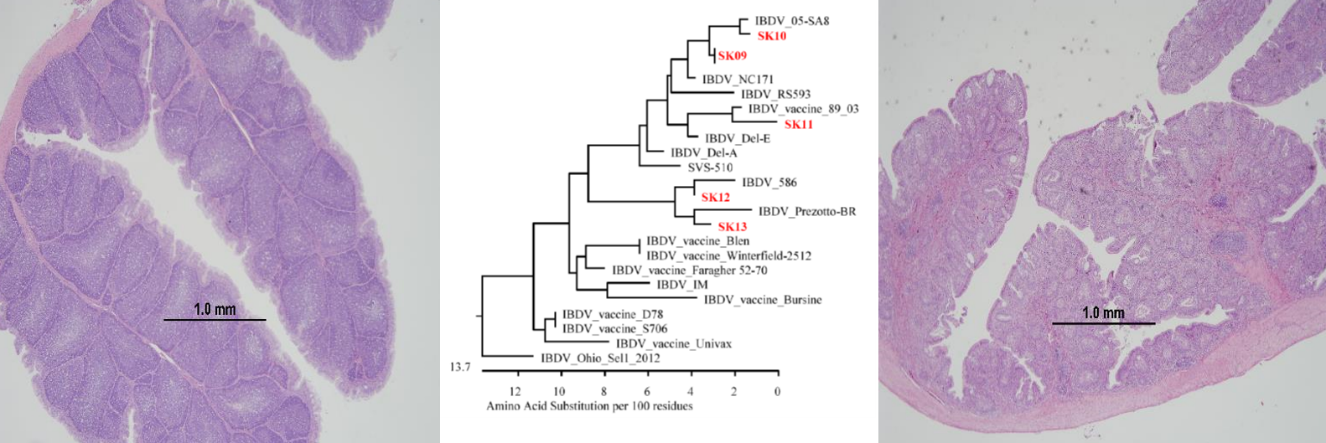
Immunosuppression due to infectious bursal disease virus (IBDV) has been a large area of research for Dr. Gomis and his research team. Previous research has determined there are five different variant IBDVs identified in the broiler chicken industry in Saskatchewan. The incidence of IBDV in broiler farms in Saskatchewan is 43% (or 52% of barns). These IBDV infections correlate to overall mortality, condemnations and poor feed conversion leading to an estimated 3.9 million kilogram loss of meat production per year in Saskatchewan. In a complementary study, IBDV was attributed to liver lesions at processing.
Economic impact of "variant" IBDV in the Saskatchewan broiler chicken industry
| Production Parameter | "Variant" IBDV Infection | No IBDV Infection |
| Feed conversion ration (FCR) | 1.87 | 1.81 |
| Live market weight/floor area (kg/m2) | 30.63 | 33.35 |
| Mortality | 8.6% | 6.1% |
| IBDV titer | 3,835 | 302 |
| Bursal weight: body weight ratio | 0.06% | 0.17% |
Zachar, T et al. 2016. Can J Vet Res. 80(4):255-261.
It is clear IBDV vaccination programs in broiler breeders are not able to produce good quality maternal antibodies in broilers against IBDV. These experimental studies also confirmed IBDV can reduce weight gain of broilers as we have seen in the broiler chicken industry in Saskatchewan. Thus, proper cleaning and disinfection and good biosecurity is important in controlling IBDV. Dr. Gomis and his team are currently conducting studies to understand the disease process of IBDV and control variant IBDV.
Our current research is on the development of live, inactivated and immune complex vaccines for control of variant IBDV in Canada.

